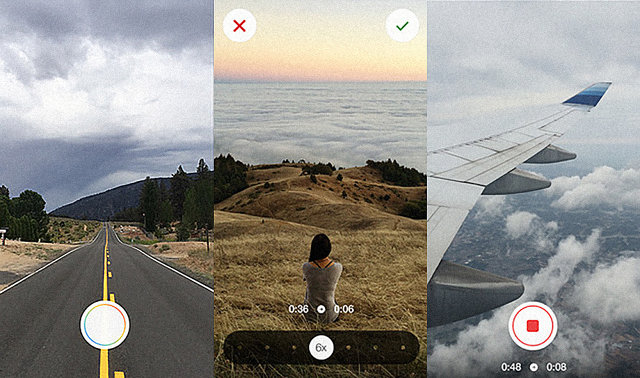Hyperlapse is a standalone new app from Instagram that speeds up and stabilizes videos into professional-looking steadicam shots.
Available now on iOS (an Android version is tentatively planned), Hyperlapse is undeniably impressive stabilization tech--just look at this Hollywood-caliber effect of the run I made to buy beer before writing this post!
Using Hyperlapse is dead simple. There's barely a UI to speak of. Load up the app, and record a video as normal of whatever you're pointing your camera at using the single on-screen button. Hit the button to record, and tap it again when you're done recording. Those are your only options. When you're done recording, the algorithm at the heart of Hyperlapse takes your footage, smooths out all of the shakiness so it looks natural, and allows you to speed up the footage up to 12x with an onscreen scrub bar. You can then choose to save the video and post it to Facebook or Instagram, where you can also apply filters or trim the video down to 15 seconds in length. But despite the lack of flashy UI elements, Hyperlapse is still slick, making good use of transparency, blur, and typography to give it a finished feel.
Hyperlapse is slick, and a cursory look at Instagram's #hyperlapse hashtag shows you that people are already doing cool things with the app: not just the inevitable first-person walking shots, but also stabilized, sped-up selfies, and mime-like skits. In addition, Instagram's 15-second video length has always felt more or less arbitrary: Unlike Vine's six-second videos, it's too long to breed creativity, but still too short for capturing more meaningful events. For Hyperlapse, one benefit is that it can be used to cram more video content into 15 seconds. Posting on Facebook, though, there's little benefit you get from using Hyperlapse short of filtering a video through the lens of stability and speed.
But while the app is cool, it's also weird that Hyperlapse is its own app at all.
Facebook has been trying to break up its service into a number of discrete, single-serving apps for the past year or so: most recently, the company forced everyone who was reading or sending Facebook messages to install the standalone Facebook Messenger app.
Hyperlapse, however, is not much more than a pretty interface wrapped around an impressive algorithm; it's not a service in and of itself. And you can't easily export Hyperlapse videos to other services outside of Instagram or Facebook.

Built into Facebook or Instagram, Hyperlapse could become a useful and well-explored videography tool. It has just as much merit as any Instagram filter. But released on its own, Hyperlapse is just another app to drag to your smartphone's "Photo + Video" folder and forget about. It makes about as much sense as Instagram's "Hefe" filter becoming an app of its own.
Which is a shame, because it means that as cool as Hyperlapse is, there's a good chance no one is going to be using it a few weeks from now. You know, like some of Facebook's other single-serving apps like Paper and Slingshot.














